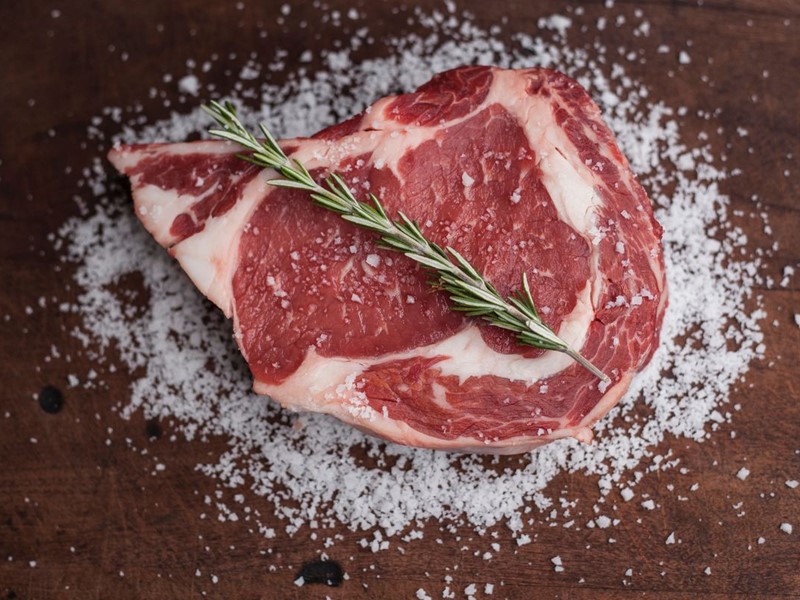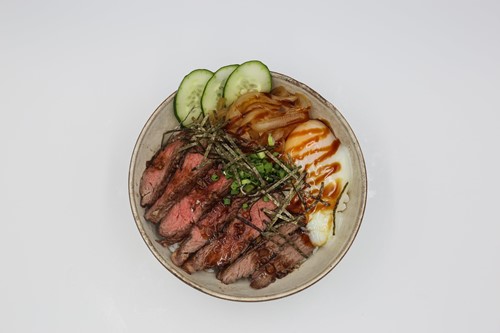The Various Cuts of Choice Steaks and Their Differences

What is the difference between choice, prime, and select cuts of steak? Many different steaks are out there, and not all are created equal. If you arrived here after searching online for ‘choice steaks near me’, you might already know what a choice steak is and be searching for the right texture and taste for your needs.
This guide will tell you everything you need to know about choice cuts of steak and their different costs, texture, taste, and fat content.

What Are Choice Steaks?
The U.S. Department of Agriculture (USDA) gives three quality grades to steak: prime, choice, and select. Choice steaks are high-quality beef products with a lower fat content (less marbling) than prime cuts and are the second highest meat graded by the USDA, making up just under half of the meat they assess.
Choice cuts make great grilling steaks because they’re known for being tender and flavorful. They’re also perfectly suitable for smoking, roasting, and broiling. Choice cuts from the round can be braised with a bit of marinade for additional flavor.
What Are The Most Popular Choice Steaks Available?
The most popular and expensive cuts of choice steaks tend to be the porterhouse, the ribeye, and the tenderloin. However, a wide range of lesser-known choice steaks are equally delicious, such as flat iron, sirloin, and flank steak. This guide will cover the eight most popular cuts and what makes them unique.
Tenderloin
Tenderloin is cut from the psoas major muscle, which is not involved in movement. This makes this juicy cut perhaps the most tender cut of meat, giving the steak its name. The meat has very little fat content, and you can recognize it for its long, round shape. A tenderloin steak comes without a bone.
A filet mignon is a tenderloin steak and is taken from the smaller end of the loin. It is one of the most tender cuts of steaks and is often one of the most expensive.
Because the meat is so tender, tenderloin tends to cook quickly, meaning optimum flavors can be achieved when cooking it through to medium or rare. The tenderloin is packed full of beefy umami flavor with a melt-in-the-mouth tender texture when cooked.
Ribeye
Ribeye steak is taken from the ribs, which means it has a higher fat content (more marbling) than tenderloin. Despite the higher fat content, the ribs' low movement or weight-bearing load means the meat is still incredibly tender.
Ribeyes are rarely served with the bone intact, and if you get a bone-in ribeye steak, it tends to be called a tomahawk, which you can read about later in this guide.
The fat content in the ribeye gives it a slightly more meaty, buttery flavor and a more marbled texture than the tenderloin. Ribeyes are also one of the more expensive cuts of steak due to its high marble content and desirable flavor.
Porterhouse
The porterhouse steak comes from the loin section of the animal (from the end of the rib cage) and has less marbling than the ribeye but still retains a tender texture. This thick cut is suitable for grilling, but also broiling or smoking.
The porterhouse is cut from between the junction of the ribs and the tenderloin, combining the tender and rich flavors of the tenderloin with the meaty taste of the ribeye. A porterhouse cut tends to cost more than a ribeye due to the combination of flavors and the position of the cut.
New York Strip
The New York strip is a leaner cut of steak than the ribeye, with less marbling. It comes from the short loin of the cow and is not a working muscle, which makes it tender and soft. It still has a higher fat content than the tenderloin and will come with a thick strip of fat along the side and some marbling throughout.
A New York strip will often cost a little more than a ribeye and slightly less than a porterhouse steak. The higher fat content will give it a robust beefy flavor and marbled texture.
Flat Iron
Flat iron steaks are cut from the shoulder of the animal, yet despite this location, they are still surprisingly tender and lean. The steak still retains moderate marbling, giving it a beefy, rich flavor. The benefit of flat iron choice steaks is that they tend to be less expensive than other cuts due to their location, but they still retain rich flavor similar to other cuts.
Tomahawk
The tomahawk is taken from the rib, just like a ribeye steak. It is essentially the same as a ribeye, but the tomahawk includes at least five inches of bone. The tomahawk bone renders and infuses with the meat during cooking, giving it an incredibly rich and layered flavor. The tomahawk has the same fat content as the ribeye, giving it a buttery flavor, and the inclusion of the bone for flavor can lead it to cost more than the ribeye.
Sirloin Steak
Sirloin steaks are sold as a thicker cut, but are a leaner meat with less marbling. They are cut from just above the tenderloin, behind where the porterhouse is taken from. Sirloin has a beefier flavor than the ribeye if cooked correctly, with a firm, yet tender texture. A sirloin is a less expensive cut of beef compared with other steaks like the ribeye.
Flank Steak
A flank steak is taken from a cow's abdominal muscles, making it a thicker, leaner cut of steak. It also has the benefit of making it one of the cheaper cuts of steak while still being rich in beefy flavor. The flank steak has a thicker texture than can be tenderized through marinade or slow cooking.
Where Can I Get Choice Steaks Near Me?
You can find choice steaks with a full range of flavors, textures, and prices at Grand Peaks Prime Meats. Our team has decades of experience in selecting the best choice steaks for our customers.
Enjoy our high-quality, ethically sourced, and artfully cut choice cuts of steak. Visit Grand Peaks Prime Meats for all your choice steak needs.